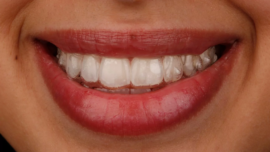Orthodontic Treatment By South Bay Dentistry
Are you looking for professional orthodontic treatment? South Bay Dentistry & Orthodontics is here to assist you every step of the way! Our experienced orthodontists specialize in correcting dental alignment, providing you with a beautiful smile and improved oral health.
With state-of-the-art technology and a personalized approach, we offer a range of treatment options tailored to your unique needs. From traditional braces to Invisalign, our experts will guide you towards the best solution. Trust South Bay to help you achieve the confident, healthy smile you deserve. Schedule your consultation today!

The benefits of orthodontic treatment often go beyond the physical changes that are often noticeable immediately: straighter teeth and an improved bite. But, there are many other benefits that most people don’t even realize until they begin treatment. Orthodontics can also be a great way to improve a person’s self-image.
Having straight, attractive teeth has long been important in Western society. But what about the problems that can arise from crooked teeth or a misaligned jaw?
Crooked teeth and jaw problems can lead to improper cleaning of teeth, leading to tooth decay and eventually, gum disease or total tooth loss.
Untreated orthodontic issues can lead to a variety of health problems, such as chewing or digestion difficulties, speech impairments, or abnormal wear of tooth surfaces. When excessive gum tissue and the bone that supports teeth are stressed, they can affect the jaw joints that can further lead to a variety of issues, like headaches or pain in the face or neck area.
The AAO (American Association of Orthodontics) advises that children receive an orthodontic evaluation at the age of seven. Commencing treatment at this stage is ideal as it coincides with the most favorable alignment of teeth, facilitating the formation of optimal oral habits.
Wearing braces has never been easier thanks to the advancements in orthodontics. Clear and tooth-colored brackets, special wires that are heat-activated and require few adjustments are just some of the state-of-the-art appliances that are used for orthodontic treatments today.
Some patients may even be candidates for treatment with Invisalign, a revolutionary way to straighten teeth using clear, retainer-type aligners that require no braces or wires!
If treatment is necessary, we will thoroughly discuss which treatment option is best suited for you!
Reasons for orthodontic treatment (braces) for adults & children:
- Breathing or swallowing problems – Mouth breathing can lead to snoring and sleep apnea.
- Crossbite – One or more upper teeth bite inside the lower teeth (towards the tongue).
- Crowding – Involving extra teeth or malpositioned teeth.
- Deep Overbite – The lower front teeth bite into the upper tissue of the upper teeth.
- Disfiguring of the face & mouth – Affects the development of the jaw and the position of the teeth.
- Jaw & jaw joint pain
- Missing or extra teeth – Due to tooth decay, injuries, or inherited problems.
- Overjet (protruding upper teeth) – Upper teeth that protrude beyond normal and are usually associated with a short lower jaw.
- Self-image – An attractive smile can boost a person’s self-image and confidence.
- Spacing between teeth – Teeth are missing or may be too small or too large.
- Speech, chewing or biting problems
- Underbite (lower jaw protrusion) – Lower jaw is longer than the upper jaw.
Specific to children:
- Finger or thumb sucking – These habits can cause protrusion of the upper incisor teeth, and mouth breathing.
- Teeth erupting out of position – Can be guided to proper alignment.
What does orthodontic treatment involve?
Orthodontic treatment involves three phases:
1. Planning Phase – Your first couple of visits may include the following:
- A medical and dental history evaluation.
- Castings or “molds” of your teeth.
- Computer-generated photographs of the head and neck will aid in planning.
- Photographs of your face and mouth.
- X-rays of the teeth and jaws.
After careful planning, your orthodontist will design and apply braces or fabricate custom-made appliances for you.
2. Active Phase – Active treatment involves visiting your orthodontist on a regular basis for adjustments and following specific treatment requirements to ensure successful treatment.
3. Retention Phase – When you finish treatment, your braces and/or appliances are removed. Usually, retainers are made for people to wear when the teeth and bones have stabilized in their new. The goal of treatment is to have a stable bite, and that’s when braces are removed and retainers are made. If the retainer is worn continuously, it should maintain the changes made to your teeth.
Treatment and retention times vary depending on the individual. Most treatment plans can last a lifetime, but each person’s case is unique. Your orthodontist will work to make sure you get the smile you want, and they’ll continue to track your progress long after treatment.
Orthodontics, the field dedicated to aligning teeth and correcting dental positioning, offers numerous advantages. Apart from enhancing your smile and improving the appearance of your teeth, orthodontic treatments can contribute to jaw health, dental health, and potentially even your overall well-being.

